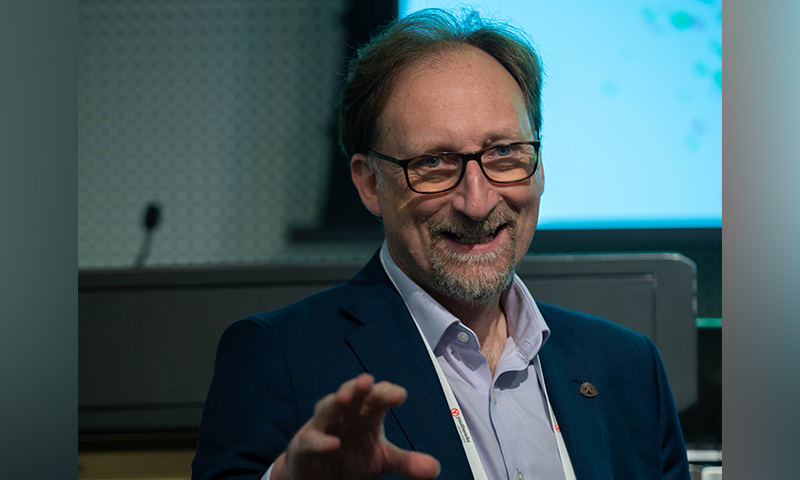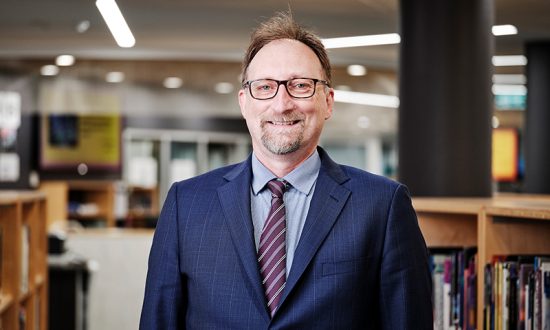Ross Phillips is Senior Dean of Learning Futures at Strathcona Girls Grammar. He is a PhD candidate at the University of Melbourne, exploring how senior secondary subject selection can contribute to social reproduction. Ross is a teacher of Physics, Science and Mathematics and author of Jacaranda Physics textbooks. At Strathcona he oversees subject selection, research and data, teacher development through the TELL program he developed, and directs the Strathcona Centre for Learning Futures – an initiative to engage the School community with the future of work and learning. Ross is a recipient of the Most Influential Educator award from The Educator in 2022.
In Victoria, Australia, where I live and work, most young people remain in school to complete Year 12. The Department of Education and Training (DET) reported the proportion of the age cohort who enrolled in Year 12 in 2021 to be over 91%. The DET’s Education State policy “Breaking the Link” published the retention rate of 96.4% for students from Year 9 to 12 in formal education. The goal of universal senior secondary education, is of course, not unique to Victoria; it is shared by the rest of Australia and many countries around the world.
Senior secondary school participation has not always been this way. In the late 1960s the proportion of Victorian students completing Year 12 had risen to around 24%. At that time, Year 12 examinations and the secondary school (Years 7 to 12) curriculum were set by the University of Melbourne. The purpose was to select students for entry to the University of Melbourne. This was in an era when most young people could enter employment without having completed secondary school. Credential inflation over time has meant that the minimum educational requirements for entry into many careers has increased dramatically.
While Victorians have nearly achieved equality of educational opportunity in terms of access to K-12 schooling, I believe there is work to be done to achieve a secondary education for everyone. The system still primarily serves the kinds of students sought by the University of Melbourne – only a small proportion of the cohort. While the vast range of options available in the senior secondary years in Victoria ensures most students can find a course suited to them, there is no equality. What is celebrated reveals that some students are more valued in the system than others.
At the crudest level, the publication of high achievers, both individuals and schools, celebrates one type of achiever, little changed from those matriculating in the 1960s. When the Year 12 student results are released, the media is saturated with lists and case studies of students and schools who have achieved the highest ATARs – the Australian Tertiary Admissions Rank. The ATAR system is used in particular by the Group of Eight universities – Australia’s leading research universities – to select students for entry to their courses. It has been a useful predictor of student university success, with those achieving higher ATARs tending to complete their university courses, while those with lower ATARs being more likely to change courses or drop out. Schools publish summaries of their results on billboards and websites as markers of school quality, trapped in a cycle of needing to attract students by engaging in a practice that marks many school completers as unsuccessful. There is nothing wrong with celebrating academic excellence, but when education is reduced to a number, it tends to narrow what is understood as excellence.
There are several practices in schools that contribute to the privileging of some types of senior secondary education over others. For example, there is a group of subjects that are prerequisites for entry to some university courses. This makes sense as some subjects provide better preparation for those courses than others. However, when deciding which classes to offer at a school from the vast array of options available, schools prioritise prerequisite subjects, which benefits the privileged. Also, subjects available in a school can depend on student interest, with subjects being cancelled due to low enrolments. The threshold number to trigger cancellation tends to be lower for prerequisite subjects.

Other subjects are prioritised too. Language classes often run with numbers that would not justify a class in another subject. Similarly for Music. These subjects, while generally not prerequisites, are subjects preferred by the more academically inclined student. Even a well-resourced school is unlikely to run a class of Geography, Physical Education, Product Design or a Vocational Education and Training course with fewer than, say, five students, but would hesitate before cancelling advanced Mathematics, Chemistry, Physics or French.
Schools tend to be staffed and equipped with the physical resources to run the traditional academic subjects. If it came to a choice between a science laboratory and a metalwork room in a comprehensive secondary school, few schools would forego the science laboratory. The traditional subjects are better resourced in terms of textbooks and other teaching materials, professional associations for the teachers, competitions, clubs, and initiatives to encourage participation.
As a result, schools produce more graduates who go on to become teachers in traditional academic subjects (the sciences, English, Mathematics, History) than those in more hands-on and vocational areas, so the cycle continues. But despite what is celebrated at school, graduates of all subject areas go on to lead successful lives contributing to society in diverse fields that have little to do with academic life. Those working in retail, manufacturing, carpentry, plumbing and electrical work are just as important to keeping society running, as those who enter professions and academia. Most of these people are completing Year 12, but the reward for doing so is less transparent. How are we ensuring that we are not just subjecting everyone to education, but actually providing education for everyone? I find myself questioning a system whose most visible acknowledgement of achievement is a rank, from which most students receive no gain, including those who are going to go on to lead successful lives as valuable members of the community in part thanks to their education.
As teachers, schools, school systems and society, we need to reflect on why we provide, encourage and even mandate school completion. It cannot be just to select the top few percent for a handful of professions. We cannot just make students stand up to be ranked in an order that differs little from the ranking they would have received if the scoring had been done years earlier. One way of valuing schooling beyond its filtering function is to recognise that school has become the primary method society uses to cultivate its citizens. The longer students are in school, the greater impact it will have on them. Schooling can help build a more inclusive society, but it can also reproduce class divisions.
So, we are left with a challenge: to value and celebrate the broader outcomes of education such as the ability to: cooperate, work in teams, empathise, create, critique, and communicate. We do not need to engage in the zero-sum game of ranking for these. No matter how well students do or how well we educate them, there will only be ten percent of students in the top ten percent. Have they developed the required skills or not? These capabilities make graduates more effective in whatever walk of life they choose or that chooses them. There is a movement leading this change – central to it being initiatives such as New Metrics for Success from the University of Melbourne and the Mastery Transcript Consortium. The more education evolves, particularly at the senior secondary level, from a filtering process aiding the elite few, to an inclusive cultural practice that values the diversity of talents and the contributions different people make to society, the more we will have achieved an education for everyone, not just subjected everyone to an education.




